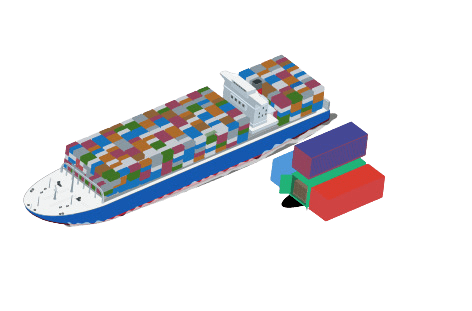The trade balance is one of the key economic indicators of a country, providing insights into import and export operations.
This indicator reveals the difference between exports and imports during a specific period, allowing for an analysis of the country’s trade profile concerning the international market. In this article, we will explain what the trade balance is, how it is calculated, and its importance to the economy.
Furthermore, we will discuss the concepts of trade surplus and trade deficit, and how exchange rate regimes impact international trade operations. Logistics managers will find valuable tips to optimize their activities.
What is the Trade Balance?
The trade balance is an economic indicator representing the difference between the value of a country’s exports and imports during a specific period.
It provides a clear view of the country’s commercial transactions with the rest of the world, showing whether the country is exporting more than it is importing (trade surplus) or importing more than it is exporting (trade deficit).
How is the Trade Balance Calculated?
Calculating the trade balance is simple: you subtract the value of imports from the value of exports. If the result is positive, it means there was a trade surplus, and if it’s negative, it indicates a trade deficit.
This difference reflects the country’s net trade balance, meaning the difference between the money coming in and going out through commercial activities.
Meaning of Trade Surplus and Trade Deficit
When analyzing the trade balance result, three main scenarios can be identified:
- Trade Surplus: Occurs when the value of exports is greater than that of imports. In this case, the country receives more money than it spends in international commercial transactions, which is favorable for the economy.
- Trade Deficit: Happens when the value of imports is greater than that of exports. This means the country is spending more than it earns in international trade, which may indicate economic imbalances.
- Balance: Occurs when the value of exports equals the value of imports. In this scenario, there is neither a trade surplus nor a trade deficit, and transactions are in equilibrium.
Exchange Rate Regimes and Their Impact on the Trade Balance
Exchange rate regimes are rules and agreements that determine a currency’s exchange rate in relation to other foreign currencies. This exchange rate plays a crucial role in import and export operations as it directly affects the prices of internationally traded products and services.
Different types of exchange rate regimes include:
- Floating Exchange Rate: In this regime, the exchange rate is determined by the market with minimal government intervention. Currencies float freely based on supply and demand and can experience frequent fluctuations.
- Fixed Exchange Rate: In this system, the government sets a fixed exchange rate against a foreign currency or a standard like gold. The goal is to maintain monetary stability and control inflation.
- Exchange Rate Band: In this regime, the government defines upper and lower limits for the exchange rate. When the rate goes beyond these limits, the government intervenes in the foreign exchange market to adjust it within the established band.
Tips for Logistics Managers
The trade balance and exchange rate regimes significantly impact logistics operations, especially in import and export activities. Logistics managers can take steps to optimize these operations:
- Assess Scenarios: Stay vigilant regarding trade balance results and currency fluctuations to understand how they can affect the cost and demand for imported and exported products.
- Inventory Planning: Based on trade balance forecasts and currency changes, plan your inventory properly to ensure product availability and avoid overstocking or shortages.
- Market Diversification: Understand the significance of different markets for your country and seek to diversify your operations to reduce dependency on a single market.
- Leverage Tax Incentives: Be aware of tax incentives offered by the government to promote exports and optimize the cost of operations.
Understanding the trade balance and exchange rate regimes is essential for logistics managers involved in international trade operations. These indicators can offer valuable insights for making strategic decisions, making operations more efficient and competitive in the global environment.
Conclusion
The trade balance is one of the key economic indicators reflecting a country’s commercial transactions with the rest of the world. Understanding its calculation and meaning is crucial for evaluating the economy’s health and making informed decisions.
Exchange rate regimes directly impact import and export operations, influencing companies’ costs and competitiveness in the international market.
Logistics managers should monitor these indicators and take strategic actions to ensure efficiency and agility in international trade operations. By following the tips presented, it is possible to maximize opportunities and minimize risks in this dynamic and globalized environment.
We hope this article has been enlightening and informative for logistics managers and professionals involved in international trade. Remember to always seek updated information and consult with experts to succeed in your operations. Good logistics and international business!
What is Cheap2Ship?
Get to know Cheap2Ship, a technology company specialized in logistics and international trade. Through our advanced freight management and quotation platform, medium and large companies have experienced a significant increase in operational efficiency and a reduction in logistics costs.
Our commitment is to provide greater transparency in the costs related to current freight suppliers, such as shipowners, freight forwarders, and carriers. This allows our clients to make more informed and strategic decisions for their businesses.
To learn more about our innovative solutions, visit our website and follow us on social media. There, you will find relevant content about international trade, logistics, and supply chain. We are ready to drive your company’s success in the global market. Join us and discover how we can make a difference for your business.

